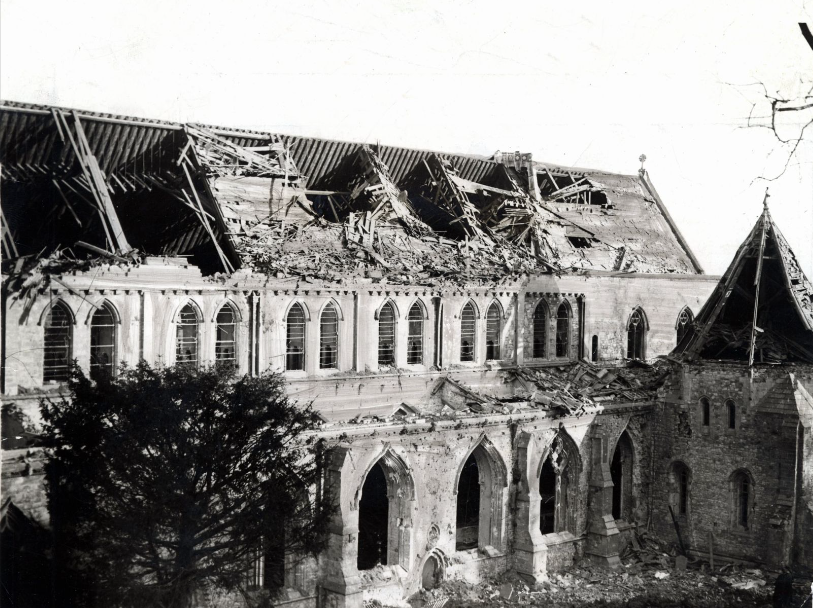THE CARDIFF BLITZ
On the 3rd, 10th and 12th of July 1940, the German Luftwaffe targeted Cardiff. And again, on the 7th of August. Further air raids continued in 1941, with raids on 2, 3 and 10 January. Over 100 bombers attacked the city over a 10-hour period beginning at 6.37 pm on the night of 2 January 1941. Dropping high explosive bombs, incendiary bombs and para
chute mines, the Riverside area was the first to be bombed.
chute mines, the Riverside area was the first to be bombed.
|
In Grangetown, the Hollyman Brothers bakery was hit by a parachute mine, 32 people who were using the basement as an air raid shelter were killed. When the raid was over 165 people had been killed and 427 more injured, while nearly 350 homes were destroyed or had to be demolished. Chapels and the nave of Llandaff Cathedral were also damaged. Western Cardiff was the worst hit area, particularly Canton and Riverside, where 116 people were killed, an estimated 50 of which were killed in one street in Riverside, De Burgh Street. The 10-hour air raid had started at 18:37 and Grangetown was the first area to be hit by 100 German aircraft. |
|
Further raids followed on 27 February, through 1, 4, 12, 20 March and 3, 12, 29, 30 April and 4 to 11 May. The raid of 29 April 1941 did not have the usual precursory flares or incendiaries and instead four land mines, probably intended for the Civic Centre, were parachuted without warning soon after the siren sounded. One landed harmlessly in the Castle grounds, narrowly missing the Civic shelter, but the other three had tragic consequences. Ten died in Lewis Street in Riverside from one mine. The other two fell in Cathays on Llanbleddian Gardens and Wyverne Road, killing 23 people. This included ten members of the Palmer family who had taken cover in the Anderson Shelter in their back garden. The adjoining parish hall on Wyverne Road was destroyed, but remarkably the 4th Cardiff Scout flag, carried to the Antarctic on Scott's fateful expedition, was recovered from the rubble undamaged. 1942–44 |
|
During 1942 fewer raids were carried out, but two occurred on 30 June and 2 July. Some of the last raids occurred on 7 May and 17–18 May 1943, with the raid on the 17th of May, believed by the British press to be in retaliation for the Dambuster's' raid on the Ruhr valley Dams using a bouncing bomb. The Luftwaffe bombs, hit the railway station, resulting in a 1,200-pound 540 kg unexploded bomb threatening to stop rail traffic until the bomb disposal team made it safe. |






